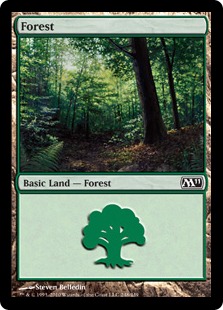Front Note: The Quest for Meddling Mage
Chris Pikula wants to purchase the original art for his Planeshift Invitational card, Meddling Mage. The artist, Christopher Moeller, no longer has the painting,
so it’s likely in a private collection or gallery. If you are the owner of the painting or know of its whereabouts, please notify Chris Pikula.
His Twitter account is @meddlingmage—you could make one of the legends of the Pro Tour very happy.
On to the article…
Since the publication of “Collecting Magic Art,” my first official
column here at StarCityGames.com, I’ve fielded questions about collecting in what I called Stage Four, the field of original Magic art (or, if
you prefer, illustrations). Some correspondents were looking to buy just one piece of art, while others were looking to assemble a wider collection.
I’m happy to help interested readers on an ad hoc basis, but the number of inquiries I’ve received has encouraged me to write this
basic guide to collecting original Magic illustrations.
This is aimed at the novice collector of original Magic illustrations, and while I’m not a master dealer or collector, I do have a small but
growing collection of my own, and I’ve had my share of harsh education. I’d like to pass on a few of my perspectives and helpful hints that
could let you avoid my worst mistakes. First, I want to clear up one big and common worry:
Magic illustration is changing, but physical illustrations aren’t dead, not by a long shot.
As the game draws in new illustrators, many of whom are more comfortable and more efficient with digital art compared to physical paint, there will be
a smaller and smaller crop of new original Magic illustrations available to collect each year. Occasionally Magic artists switch from physical to
digital (think John Avon between Mirrodin and Darksteel), further adding to the attrition. Yet until the word comes down from on high that no more
physical illustrations will be accepted for Magic: The Gathering, there will be artists producing new illustrations to collect…and Jeremy Jarvis, the
Senior Art Director who’s responsible for Magic at Wizards of the Coast, is a wickedly talented watercolorist. (For everyone who thinks
watercolors are all Rebecca Guay-style delicateness, check out Rakdos Guildmage. Yes, that’s a watercolor illustration.)
Trying to project the future may be asking to taste crow, but my hunch is that physical illustrations won’t disappear entirely for at least
another generation. I don’t worry about collecting in a soon-to-be-dead medium, and you shouldn’t either.
Ready to jump into collecting? Not so fast. Understand this:
You will make mistakes.
Now repeat to yourself about a dozen times: “I will make mistakes.” Say it again after you make one. It helps, if only a little.
I’ve made multiple gaffes in my (relatively brief) collecting history, and some of my negotiation and purchasing mistakes are all too fresh in
the memory. That doesn’t mean that the paintings themselves are bad—I own just one painting that I truthfully don’t
like—but when I think about some of my errors, when I sit in my living room, I feel less likeAlistair Cooke and more like Alistair Cookie.
I’d like to think I’m a smart guy, and I’ve taken my knocks. So will you. People don’t become elite Magic players within a week
of picking up the game, and collectors of original Magic illustrations shouldn’t expect that things will go flawlessly for them, either.
If you’re willing to make mistakes and still looking to collect, you have a key question to answer:
Before you think about buying an original Magic illustration, ask yourself, “What do I want out of this piece of artwork?”
There are many valid reasons for wanting to own an original Magic illustration. I’ve bought artwork because I loved the art itself. So far, I
haven’t bought an illustration because I’m a fan of the card it was printed on, but I’m considering doing exactly that with Myr
Enforcer (more on this later). I’ve also bought paintings that weren’t exactly what I’d been looking for at the start, but which I
could appreciate and which came at the right price. Once, I also made the mistake of buying a painting just because it was cheap. Emphasis on once,
because…
The worst possible reason to buy a piece of Magic art: “Because it’s cheap.”
You could subtitle this one “$150 I’ll never get back.”
The first original Magic illustration I ever bought was Spiritual Asylum by Matt Cavotta. Matt is an awesome illustrator, and from everything of his
I’ve read and the times I’ve talked to him through e-mail and in person, he’s one of the good guys.
That doesn’t mean I should’ve paid $150 for his illustration of Spiritual Asylum.
What happened? I decided, without doing my homework, that I’d get myself an original Magic illustration for my dorm room. I’d already
picked up a drawing, of Roar of the Kha, but I wanted more. Spiritual Asylum was available. It looked cheap. I couldn’t find any other original
Magic art for nearly that price. I bought it.
Big mistake.
I don’t like Spiritual Asylum, the card or the art. I didn’t at the time, either. So I ended up owning an original piece of Magic art…
which I didn’t like and still don’t. Unless Matt Cavotta gets really old, really rich, and really desperate to relive his painting glory
days, I’m never getting that $150 back.
Don’t buy Magic art just because it’s cheap. You won’t get your money’s worth out of it. Instead, buy Magic art that speaks to
you in some way and have a plan for it. After you buy that original Magic illustration, what are you going to do with it? Are you going to frame it and
put it on your wall? If so, will it go in the kitchen, the living room, a special “gaming den,” or somewhere else? Are you going to be
buying it as an investment and stashing it in a locker somewhere? Not that I recommend this, because…
Collecting Magic art should be a hobby, not an investment.
You’ve heard the stories: Person X dies, and then the heirs find a collection of
collectibles for a pittance, and now they’re worth hundreds of thousands of dollars.
That’s not going to be you…especially if you try to approach collecting Magic art as an investment, without understanding what attracts
collectors to Magic art in the first place. The secondary market for Magic art is thinner than my hair. Trying to resell Magic illustrations as a
private collector is even harder than trying to sell them as an artist in the first place.
If you’re “just an investor,” someone who’s piled up illustrations without choosing them with a collector’s eye, then
when the time comes to resell your illustrations, the true collectors who come around will pick out the good illustrations—the ones you would
have acquired if you’d developed the collector’s eye—and leave you with the dreck you never should’ve bought. I’ve seen
it happen in other fields, where investors have made terrible decisions, while collectors who gave more thought to their own tastes than future resale
did much better.
Of course, many collectors (or their heirs) lose money when it comes time to sell. A thin market is also a volatile market, and for every fabulous tale
of heirs striking it rich with Grandpa’s stamp collection or what-have-you, there are many more attempts that end in disaster.
Treat collecting Magic art like a hobby. Put only truly disposable income toward it. Buy illustrations you love. If you don’t like the price,
negotiate. That’s the best path I know to putting together a rewarding collection of original Magic art.
It’s the path I’ve followed with my own collecting, at least since making my first early missteps. Now I’m totally going to pull a Mark Cuban on y’all, because it’s time for me to brag a little and talk
about the joys a collection of Magic original art can bring…
Collecting original illustrations has its perks, part one:
“These are my basic lands. There are many like them, but these five are mine.”
It started with the Mountain and grew from there. Limited, Constructed, you name it…unless a judge or tournament organizer makes me play with
provided lands or I make other acquisitions, I won’t be sleeving up anything but these five.
Four paintings (the Plains and Island are part of one mural),
five basic lands, and one really awesome line I use whenever I have people over for drafts: “You’ll find the lands on the shelf over there,
right next to their original illustrations.”
My quest for the basic land set started with the Mountain and ended with the Swamp, which resulted in the single funniest incident in my art-collecting
history:
Collecting original illustrations has its perks, part two: “Screw the rules! I have money!”
OK, not much money, but occasionally, a little well-placed money can pull off a cool effect.
Imagine this: you’re at Grand Prix:
Dallas/
Fort Worth on Saturday morning. The line to get cards signed by John Avon has already formed, and it’s long. You go to the end of the line, and
seconds later, you’re no longer the end. You can see John Avon in the distance, setting up his booth, and you see some schmuck walk up to the
front. Ha, you think to yourself. Doesn’t he see the line? … Wait, did he just get invited inside?
I was that schmuck, and I had some business with John Avon. Specifically, I’d negotiated via e-mail for one of his paintings, and I was there to
finish the transaction. I had a nice little chat with him and his wife, illustrator Patricia “Pat” McCarthy, while finishing the transaction. I didn’t get any
cards signed while I was back there, but I still got a few weird looks as I walked away.
Later on, I inadvertently gave dozens of people real reason not to like me when I went to get cards signed. I was in line with a friend, but I
was still enrolled in the tournament, and pairings for the next round were set to go up in a few minutes. Resigned to the idea that I wasn’t
going to be able to wait, I approached Pat, asking her if it would be possible to leave my cards with my friend to get them signed. Instead, she told
me to get my friend and go straight to the front of the line.
What was I going to do, say no?
So that’s how I made a dozens-strong card-signing queue wait while John Avon signed for me and my friend. (Yes, we stuck to the ten-card limit.)
I got dirty looks, envious looks, flat-out hater looks.
I kind of liked it.
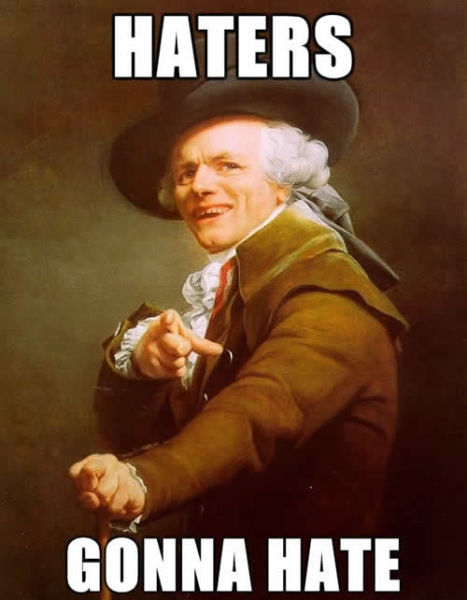
Shopping the StarCityGames.com Original Art section: one writer’s opinion.
To get you started thinking about buying original Magic art in practice, here’s my illustration-by-illustration breakdown of the
StarCityGames.com Original Art inventory. I’m looking to give you some insight into my thought processes when evaluating art.
Beast of Burden (Urza’s Legacy version)
– Ron Spears is a quality illustrator, and because the Beast of Burden was designed after Karn, fans of the silver planeswalker should have an interest
in the piece. Whether they should have $695 of interest is a trickier question to decide, and I’d have to call or write in to get the dimensions
and medium (oil paint, acrylics, etc.) of the piece before making a buying decision.
Browbeat
– Mark Tedin is the longest-tenured Magic illustrator, with new work appearing in everything from Alpha to New Phyrexia. He knows his way around
illustrating just about anything, but unfortunately, sometimes that involves illustrating storyline characters, which are a hard, hard sell. A
10” x 8” illustration isn’t a bad size at all, but unless I were a fan of the card Browbeat, or else the characters Kamahl and Jeska,
I’d put my $595 somewhere else.
Cabal Therapy
– To me, this painting absolutely justifies its $1195 price tag for the right buyer. Ron Spencer’s unique visual style on an illustration for an
iconic and valuable card? That’s a potent combination. It’s a decent-sized painting, at 10” x 7 3/4”, and Ron Spencer usually
works in mixed media, so that’s my guess for how the painting was made. The tricky part with this painting is the “What are you going to do
with it?” criterion—the nightmarish vision isn’t exactly suited to prominent display in a household containing small children!
Early Harvest (7th Edition version)
– At $395, this is the least expensive artwork in the store. Remember what I said, though—the worst possible reason to buy a piece of art is
“because it’s cheap.” If you’re a fan of Early Harvest the card, or Early Harvest the 7th Edition Heather Hudson art,
you’re in luck. Otherwise, you’re better off putting your $395 toward another painting you’ll like more.
Engineered Plague (Urza’s Legacy version)
– This illustration is trading off the card it graced rather than its own aesthetic qualities. While Michael Sutfin is a nice guy from what I know of
him and a decent illustrator, I’m not putting him in the top tier, and the content of the illustration—two Goblins, one gagged,
are tied to a Viashino who is himself chained up—is fairly nonsensical (and if you think about it too long, more than a little creepy). Get the
dimensions before you spend the $795 for this piece.
Goblin Grenade (Ron Spencer, Fallen Empires version)
– With Goblin Grenade getting a reprint in Magic 2012, interest in the old versions of the card is sure to spike. As an older (Fallen Empires)
illustration, this Ron Spencer artwork has considerable nostalgic charm. The $1195 price tag and relatively small 7” x 5 1/2” dimensions
give me pause, but they won’t be obstacles for the right fan of the card and the artwork.
Kilnmouth Dragon
– It kind of surprises me that this one is still available at $1095. Carl Critchlow is a long-tenured Magic illustrator, and while Kilnmouth Dragon has
an unconventional appearance compared to Magic’s other Dragons, it’s a uniquely powerful image. My “dream buyer” of this
painting is Darwin Kastle, who took Kilnmouth Dragon to the Top 8 of Pro Tour – Venice with his go-big deck, “The Claw.”
Krosan Cloudscraper
– As befits such a monstrous creature, Krosan Cloudscraper is a gargantuan original artwork as well, measuring 20” x 16”. Different sizes
of artwork appeal to different buyers, and the larger Cloudscraper might fit with a buyer’s decorating plans in a way smaller illustrations
can’t. On the other hand, a buyer will have to love the illustration to pay $1695 for it, and while I think it’s cool, I don’t think
it’s $1695 worth of cool. Just because it wouldn’t be worth it for me doesn’t mean it’s not right for you, though.
Myr Enforcer
– If things had broken differently in the StarCityGames.com Talent Search, this painting wouldn’t still be in the store. Most of my “What
would you do with the shopping spree?” fantasies revolved around this piece of art. I didn’t win, though, and this 10” x 6 3/4”
Greg Staples illustration is still available for Affinity fans who want to remember the robots. At $695, I consider the painting reasonably priced, and
while I’m not currently a serious candidate to pick up this painting, if I were to buy one illustration out of the store, this would be it.
Phantom Centaur
– I’d like to see this one go to a good home, and I think it has a shot. At $695, the price is reasonable by Magic illustration standards. Carl
Critchlow, as I’ve mentioned, is a quality artist. While I’m sure someone with a more formal art background could quibble on the point, the
whole painting just “works” for me, getting across the idea of a ghostly centaur still patrolling his glade. At 11 1/2″ x 9”, the
size is decent, too. Phantom Centaur doesn’t run to my usual art-collecting tastes, but it could change my mind.
Predator, Flagship
– Unless you’re a fan of the Weatherlight saga, or else someone who likes borderline-sci-fi in fantasy illustrations, this is not the
$895 illustration for you. Mark Tedin put in some good work, but this art just doesn’t wow me.
Rorix Bladewing
– I like the card, like the art, and like the artist (Darrell Riche). If anyone’s put together a Rorix Bladewing Commander deck, how cool would
it be to have this illustration framed on the wall? At $1895, though, almost any Magic illustration from the past ten years would be a tough sell, at
least to me. That said, I’m sure there are people out there who would be thrilled to own it at that price, and more power to them! It’s
just not for me.
Spectral Lynx
– Kitty! Heather Hudson’s grinning Spectral Lynx creeps me out a little, to be frank, but to a different eye, this 11 1/2″ x 9”
illustration with its detailed lynx and abstracted background is going to hit the spot, and at $695, it’s well worth considering for collectors
who like the art.
Story Circle (8th Edition version)
– I like Alan Pollack’s work as a whole, but this one just doesn’t speak to me. Unlike the Mercadian Masques version, there’s no real
“story” to the circle, unless you count the fact that each color is flanked by its enemies rather than its allies. If you like the artwork,
go ahead and buy it, but don’t spend $495 just because the illustration costs less than most of the others in the store.
Wildfire (Portal 2 version)
– If Pete Hoefling were to tell me, “Pick out any piece of original Magic art in our inventory and take it home with you,” this would be my
choice, and not just because I’m a “landscape guy.” Rob Alexander is one of the very best Magic illustrators, and this scene of a
volcano with lava sparking a wildfire in the land below is both gorgeous and haunting. Do I have $1395 to spend on a piece of Magic art? Not right now.
If I did, would this 10” x 8” painting be near the top of the list? Darn right, it would.
Wildfire (Urza’s Saga version)
– While I’m a fan of the Rob Alexander Wildfire, this Carl Critchlow number really isn’t to my taste. “Gigantic lizards trying to
avoid getting burned to a crisp” just isn’t something that I’d want to put on my wall. If you prefer this version of Wildfire,
though, it’s both larger than the Rob Alexander painting (11 1/2” x 9”) and less expensive, at $795.
Elder Language Highlander Contest Winners
The random drawing for the Glory promo in Hebrew was won by Sgt. Jack Morehead. It’s on the way to his APO address now. (Yes, the drawing was
random, and the man serving overseas happened to win. I didn’t rig anything. It only looks like I did, heh.)
In addition to the random drawing, since several correspondents submitted their ideas for a Glory deck, I decided to go ahead and give away a second
copy. The winning deck designer is Kegan Chang. Congratulations to Jack and Kegan!
I’m still waiting to get address confirmation from the following winners of the Elder Language Highlander contest:
Raging Kavu:
Adam McDonough
Questing Phelddagrif: Evn Tomeny
Stone-Tongue Basilisk: Kevin Montour
Glory: Kegan Chang
Send a copy of your original submission along with your mailing address, and I’ll get your Elder Language Highlander commander mailed out right
away.
As always, thanks for reading.
— JDB
@jdbeety on Twitter

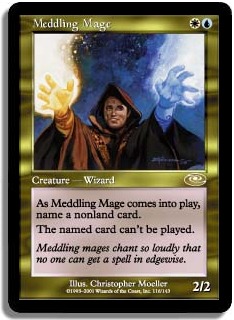


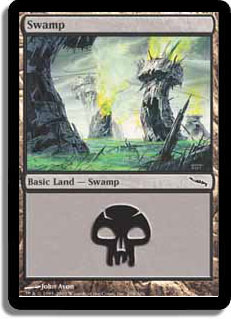
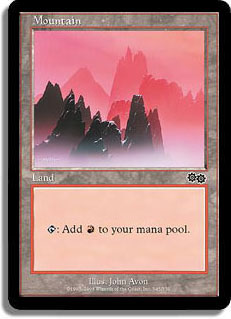 [/card]
[/card]